Submitted by Pranati Satti
Uncovering the Intertwined Worlds of Architecture and Family: Conversation with Apurva Bose Dutta
India Architecture News - Jun 19, 2023 - 19:29 2915 views

Indian author, award-winning architectural journalist, curator, and educator, Apurva Bose Dutta recently launched her second book, "Architectural Inheritance and Evolution in India". The book delves into the fascinating intricacies of the personal and professional bonds of ten architecturally distinguished families in India spanning multiple generations. Through the journeys of 44 architects, it encapsulates the transformation of architecture over the decades in India. Since her first book, "Architectural Voices of India," Dutta, who has authored and curated this book, shares that the discourse surrounding architects predominantly in India revolves around their work, while their journeys, ideologies, and perspectives remain understated. Building upon this foundation, her second book explores the origins and development of an architect. Though presented in the essay format, the book is driven by intensive research and oral history recorded of the ten architectural families.
Having spent close to 15 hours a day over the last two years researching, conversing, interpreting, writing, editing, and curating the book, Dutta discusses her thought process, challenging moments and path leading to the launch in this exclusive interview for World Architecture Community.
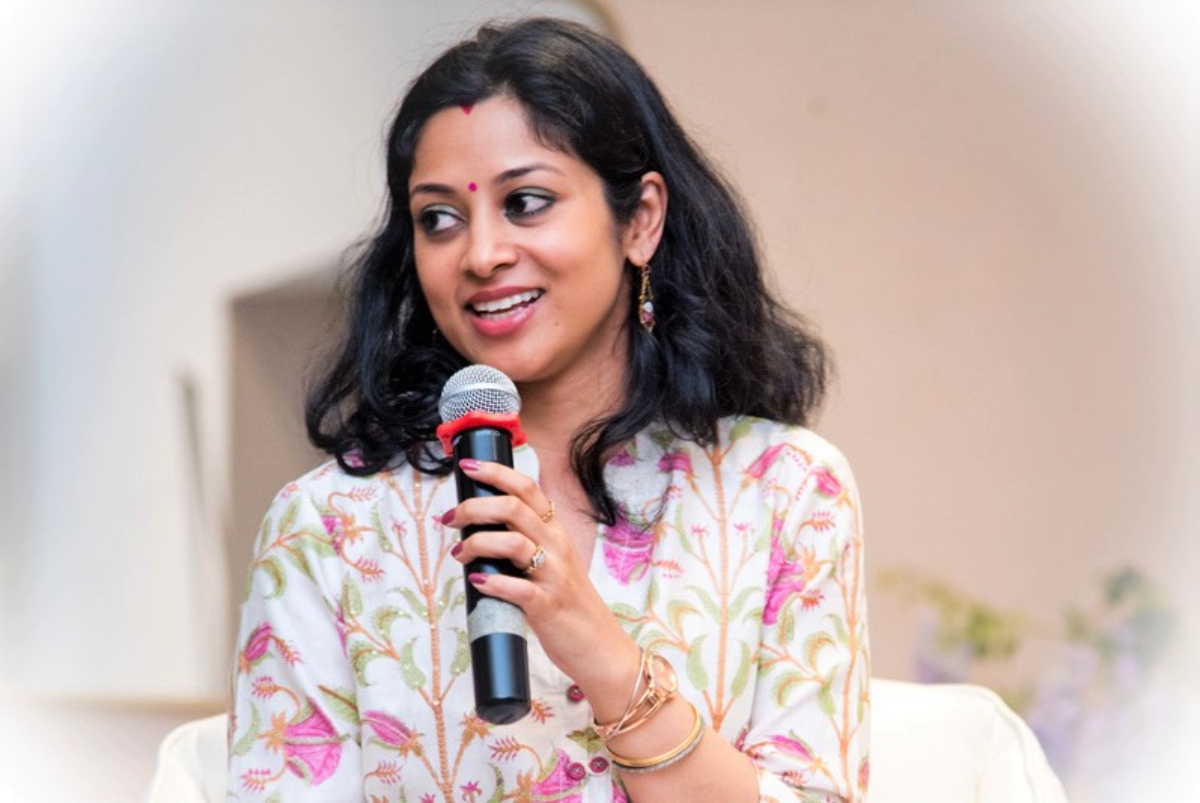
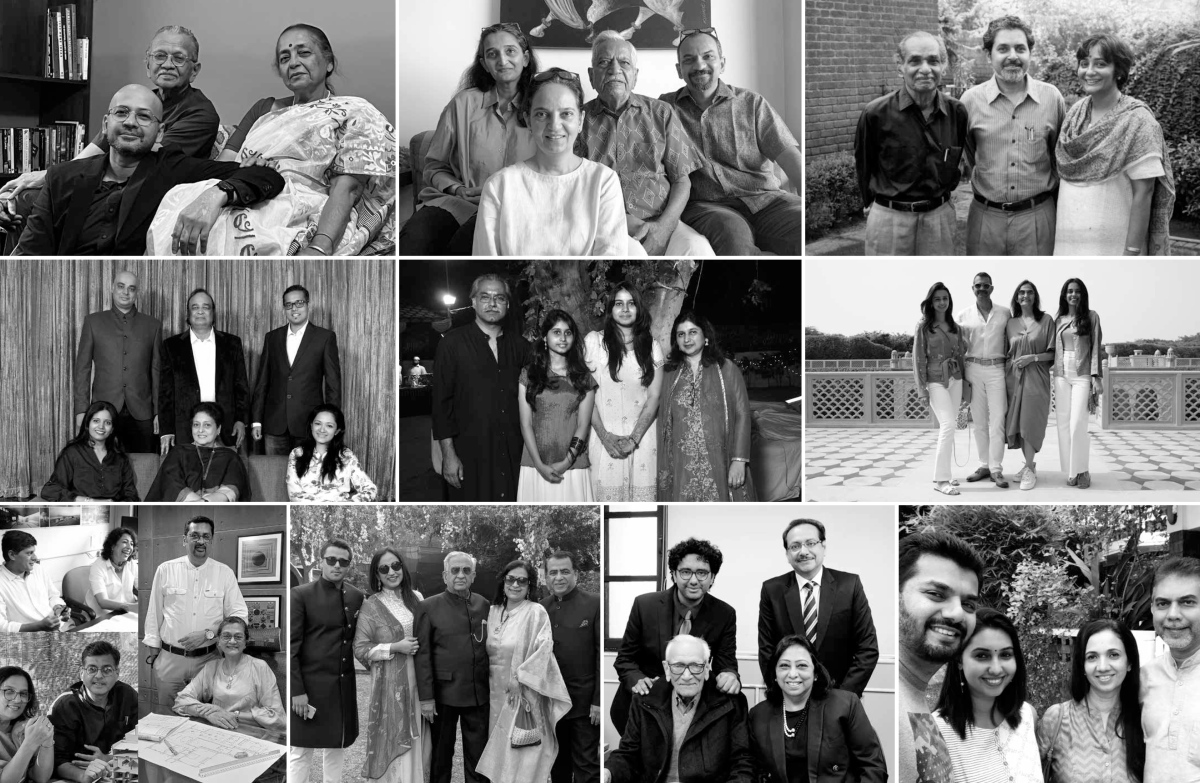
Families featured in the book Image © courtesy of Apurva Bose Dutta
Pranati Satti: What inspired you to explore the theme of families and architecture in India?
Apurva Bose Dutta: In my journey of architectural writing and journalism, I have always wanted to be unconventional and explore themes and topics that have received less attention. In India, inheritance in architecture has not yet been studied in depth. The fact that numerous architectural families in India work through multi-generational and heterogenous practices does call for intensive research on the theme.
In India, families are bound by social, traditional, and cultural values, which leads to a fascinating equation between their personal and professional lives, especially in cases where the families share a profession or practice. Architecture is a subjective field and can have diverse interpretations. I was interested in understanding the outcome when familial bonds intersect with varying professional methodologies and ideologies with architecture as a background. The idea for the book was always there, but it wasn't until the pandemic that the familial bonds came into additional limelight that I started working on the book.
Pranati Satti: How did you select the ten architectural families featured in your book? Were there any specific criteria or considerations that influenced your choices?
Apurva Bose Dutta: The primary criterion was to have families with an architectural lineage who have remarkably contributed to the architectural evolution of India. I decided on ten families to dedicate adequate space to each family member. During my initial research, I came across at least 100 architectural families in the country, the majority of which had two family members as architects. For the book, I considered only those with at least three trained architects within the immediate family. Amongst those, I included families with a minimum of two architectural generations. Ultimately this was about oral history, and doing so would help gather different perspectives. Due to the vast spectrum of design and to streamline the conversation, I focused only on trained architects. At the same time, I was also aiming for diversity in practices. In this book, some families have inter-generational practices, a few have heterogeneous practices and some concoctions, have a mix of the above. Additionally, I chose a mix of architects working in the private sector, the government, academia, and allied fields. I also wanted to explore different relationships, be it spouses, siblings, parent-child, grandparents, or in-laws.
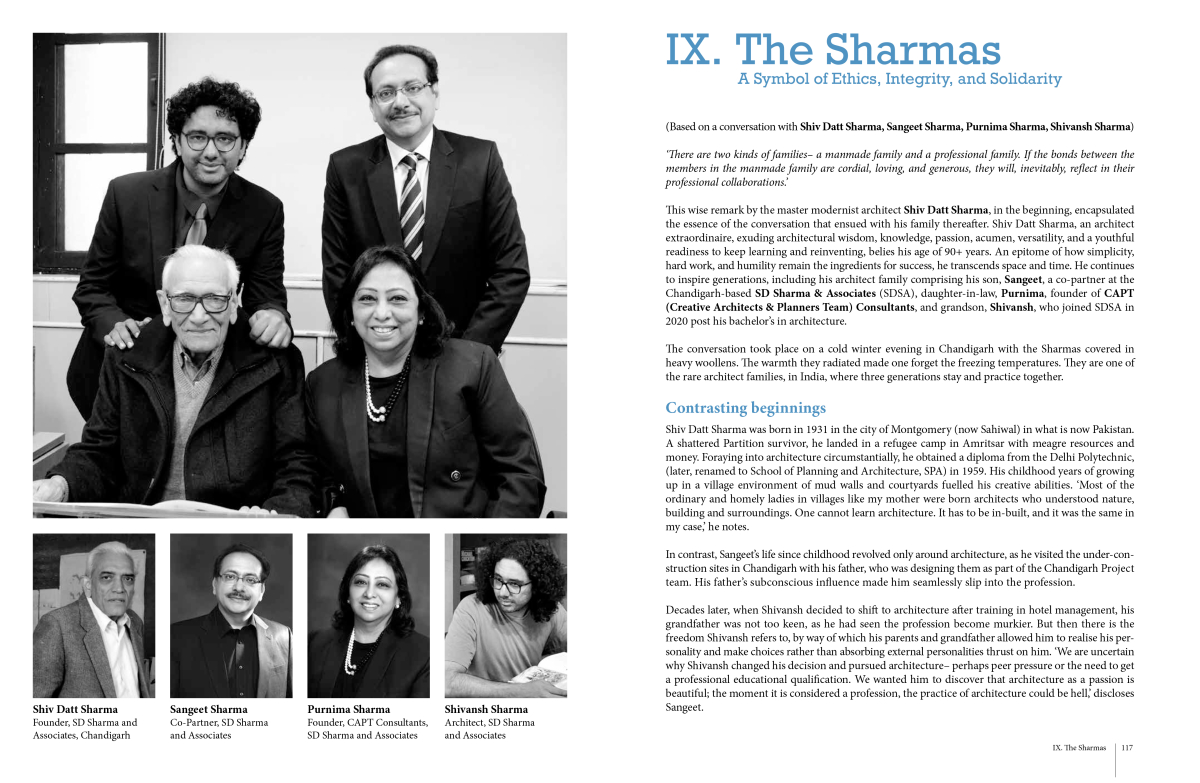
Excerpt from the book, © courtesy of Apurva Bose Dutta
Pranati Satti: In your research, what were some common threads or patterns that emerged in terms of how architecture develops across family members?
Apurva Bose Dutta: I make a detailed analysis of the above in the book’s epilogue. Every family has a legacy that they have inherited. Irrespective of whether their succeeding generations had either preserved or changed it, there was still significant evolution. The older generations primarily pursued architecture out of passion, while the younger ones were either driven by the ‘architectural’ environment they grew up or their own interest, or both. Irrespective of the reasons, architecture manifested itself in their thoughts, actions, and lives.
These architectural dynamics across family members also developed based on several professional and personal attributes of the families. In the case of personal dynamics, whether it was the communication channels between the eldest and middle generations that seemed relatively less transparent than those between the middle and the youngest, or factors of gender, geography, and educational background, the families manoeuvred these aspects to work collaboratively and contribute to the built environment cohesively. Regarding ‘architectural styles’, while some families inherited those from their seniors, others contextualised it to their times, or developed a brand new ‘style’.
Pranati Satti: Could you share an example or two from the book that highlights the complexity of navigating personal and professional equations within architectural families?
Apurva Bose Dutta: First and foremost, I discovered that daughters who worked alongside their parents, particularly their fathers, could normalize any conflicts between them more effortlessly than sons. A few sons in intergenerational practices mentioned experiencing a sense of confusion at certain stages in their professional journey, unsure whether they should augment the existing legacy or carve out their unique path within it. In some cases, this led to them starting their own practice. Another aspect I encountered was the dynamics of couples working together. A few couples in the book initially struggled to comprehend each other's working styles. However, with time, they either started collaborating on projects, incorporating inputs from their partners, or synchronised their working patterns.
We should also situate these professional navigations in circumstances where architecture transformed through generations. In the seniormost generations, the focus was on pure design. Adaptations that crept into the subject and profession due to globalisation, technology and highly-informed clients were what the middle generation encountered. The advent of the millennials happened when commercialization started ensuring that competition was getting tougher, the internet made everyone an ’architect’ and trained architects had to start fighting for their place, especially in a scenario where architecture became a collaborative process, and the architects were pushed from the centre to the periphery of the building process.
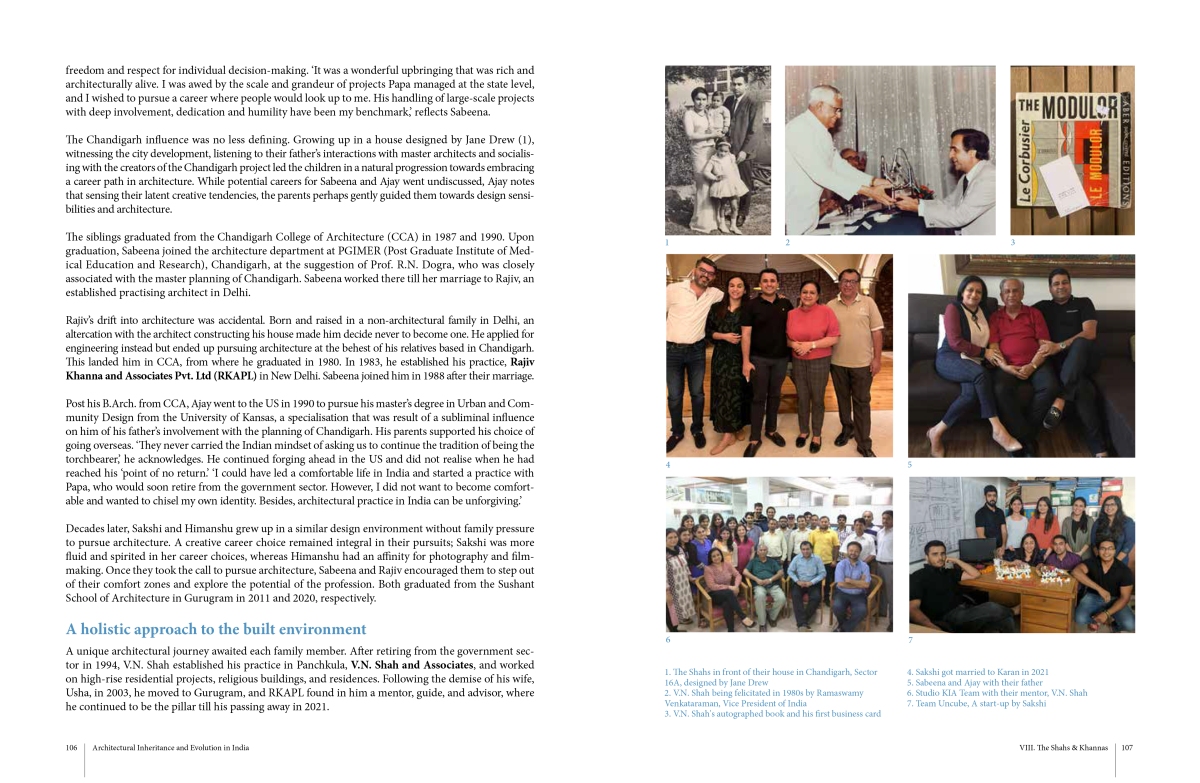
Excerpt from the book, © courtesy of Apurva Bose Dutta
Pranati Satti: What challenges did you encounter while delving into the individual and collective philosophies of the featured families? How did you overcome those challenges?
Apurva Bose Dutta: In my previous book, I dedicated my attention to 19 architects, which seemed like a significant number then. However, for this book, I expanded my focus to include 44 architects, and I wanted to ensure that each of them received sufficient space. Given their busy schedules, ensuring to get the family members together for a detailed online conversation, and requesting their time for clarifications and image collation was difficult.
With multiple generations sharing their stories from various perspectives, I had to be deliberate in guiding the conversation and extracting the most relevant information. The intensive research on the 44 architects and the transcription that followed the conversations were time-consuming. The final product had to be essays, so the transcriptions couldn’t be verbatim, and I had to be aware of not misinterpreting or misrepresenting the thoughts of the families. Even in the writing process, I had to be sensitive to the overlapping patterns of the family members and find ways to map them cohesively.

The transcription process Image © courtesy of Apurva Bose Dutta
Pranati Satti: In your opinion, how has architecture transformed over the decades in India, as reflected in the journeys of the 44 architects from the ten families?
Apurva Bose Dutta: Through the lens of ten families and 44 architects, my book offers a comprehensive understanding of the inheritance and evolution of architecture in India. Spanning across generations, the architects featured in the book range from their twenties to their nineties, encompassing a span of 70 years. This diverse group showcases distinct ideologies, methodologies, and processes within the field.
A notable trend that emerged throughout the conversations is the shift in the role of architects. Architecture has evolved from being solely focused on design to becoming a more collaborative process. Previously, architects held a central position, controlling every aspect of the project. However, in today's context, there are multiple stakeholders involved. Another common topic of discussion was the increased scale of architecture, attributed to globalisation and improved communication. The rise of internet architects and self-proclaimed architects has also become a challenge the current generation faces.
Clients in the present day are more informed, well-read, and have specific requirements for their projects. Additionally, the growth of technology and construction has been remarkable. Several families emphasised the importance of understanding the business aspects of architecture, including technology implementation, office management systems, documentation, and media coverage.
Furthermore, architecture has diversified into alternative avenues and thus there are multiple ways to exercise impact through architecture, apart from only design. Some family members in the book chose to pursue research, photography, product design, real estate, and writing alongside traditional architectural practice. This expansion showcases the broader scope of opportunities within the field of architecture.
Pranati Satti: What do you hope readers will take away from your book, especially those not directly involved in the architectural or design industry?
Apurva Bose Dutta: This book is a valuable resource for multigenerational families across all professions, offering insights on the advantages and disadvantages of predisposition to a profession. It also dwells on how to appreciate one another, effectively manage personal and professional relationships, and draw boundaries, if need be. As one senior architect in the book highlights, strong family bonds have a positive impact not only on personal relationships but also in professional settings. This underscores the importance of fostering healthy family dynamics for success in both personal and career endeavours.
Through the inspirational stories shared within the book, readers gain a better understanding of the architectural field and can view things from an architect's perspective. It can also thrust many interested young minds to plunge into architecture.
The book also reinforces our faith in the Indian family system, showcasing how cultural and social ethos plays a vital role in nurturing familial and professional connections.
In addition to personal and familial aspects, the book takes a broader perspective by exploring the larger picture of inheritance and tracing the transformation of architecture over time. This provides readers with a comprehensive understanding of the field's evolution globally, with a particular focus on India.
Pranati Satti: How do you see the future of family practices in architecture? Do you think more families will continue the tradition of having multiple creative heads working together?
Apurva Bose Dutta: Architecture is deeply ingrained in our lifestyles. Growing up in an environment surrounded by architects, children naturally absorb this passion, often leading to the emergence of more architectural families, and thus one can expect a proliferation of the same in the future. What helps is also that in today's technologically advanced and globally connected world, architecture has evolved into a multidimensional field, offering numerous pathways for future generations to explore. Architectural families today are not focussing only on design but contributing holistically to the built environment. Interestingly, some featured family members have actively ventured into alternative careers such as real estate, furniture design, writing, and photography.
Enhanced communication plays a significant role in the propagation of architectural interests within families. With increased connectivity, knowledge and inspiration can be easily shared, fostering a collective passion for the field. Each generation brings its unique lessons, contributing to the continual enrichment of architecture as a whole.
I firmly believe that architecture is intricately intertwined with life itself. By understanding our interactions with one another, within and outside our families, we deepen our comprehension of this profound discipline.
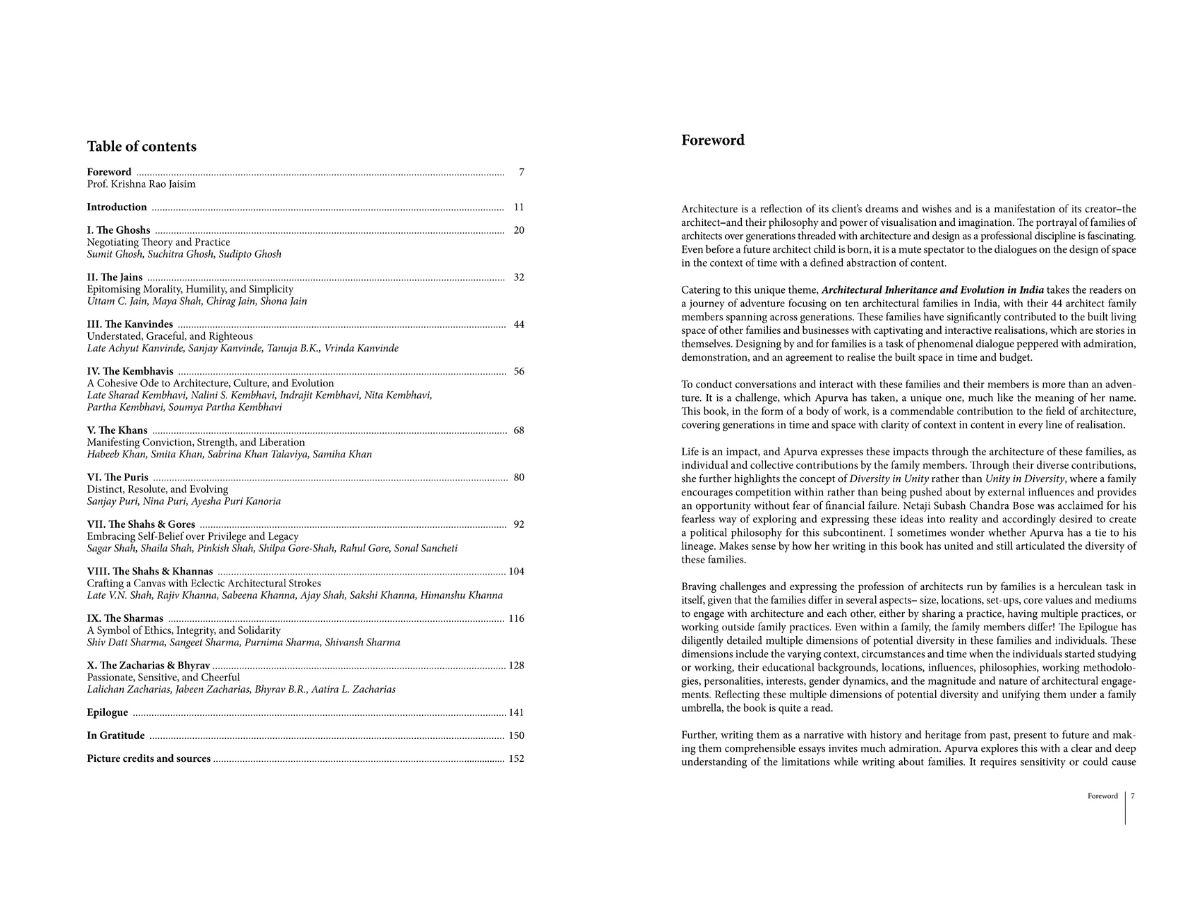
Table of Contents and Foreword by Prof Krishnarao Jaisim© courtesy of Apurva Bose Dutta
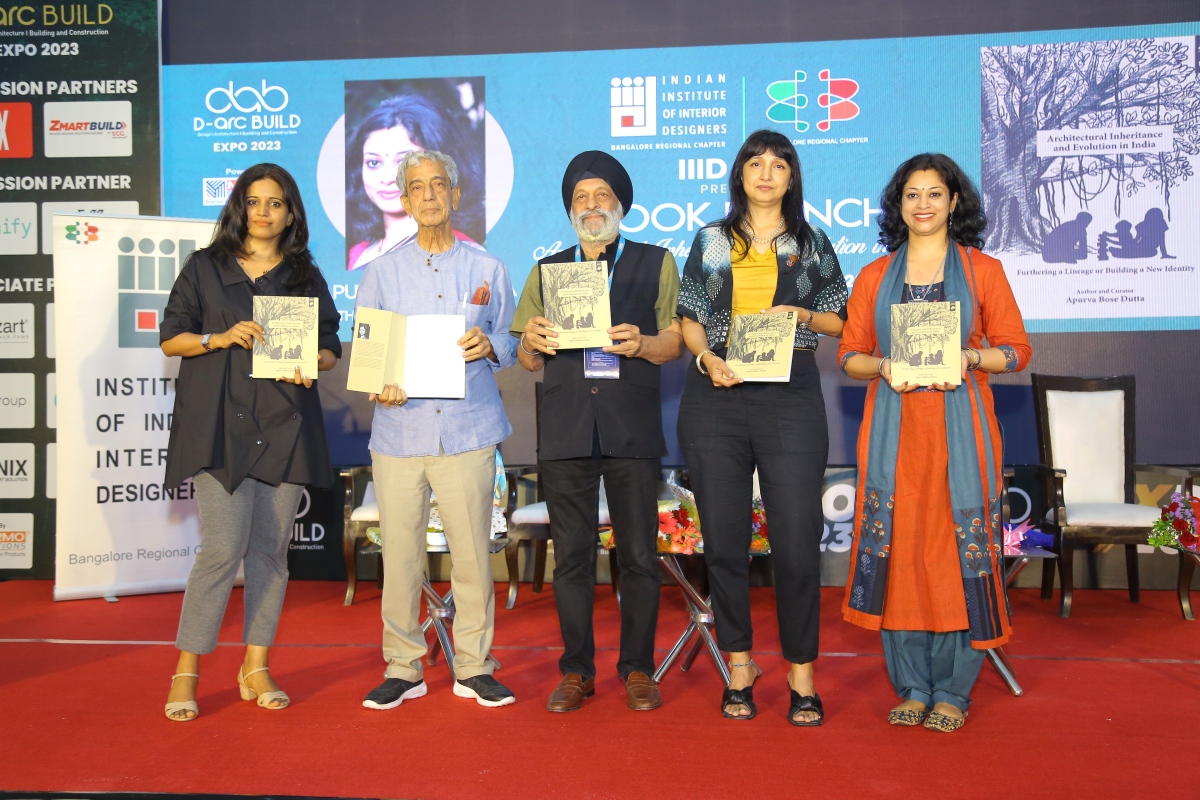 Book launch in Bengaluru, Image © Zion Exhibitions, courtesy of Apurva Bose Dutta
Book launch in Bengaluru, Image © Zion Exhibitions, courtesy of Apurva Bose Dutta
"Architectural Inheritance and Evolution in India" is published by Altrim Publishers and is supported by the Council of Architecture, India. It was formally launched in Bengaluru on June 2, 2023, and is set to launch in other cities in the coming months.
More information on the book is available at www.apurvabose.com/book-architectural-inheritance-and-evolution-in-india/
>via Apurva Bose Dutta
apurva bose dutta architectural journalism architecture family architecture inheritance evolution of architecture family and architecture inheritance
